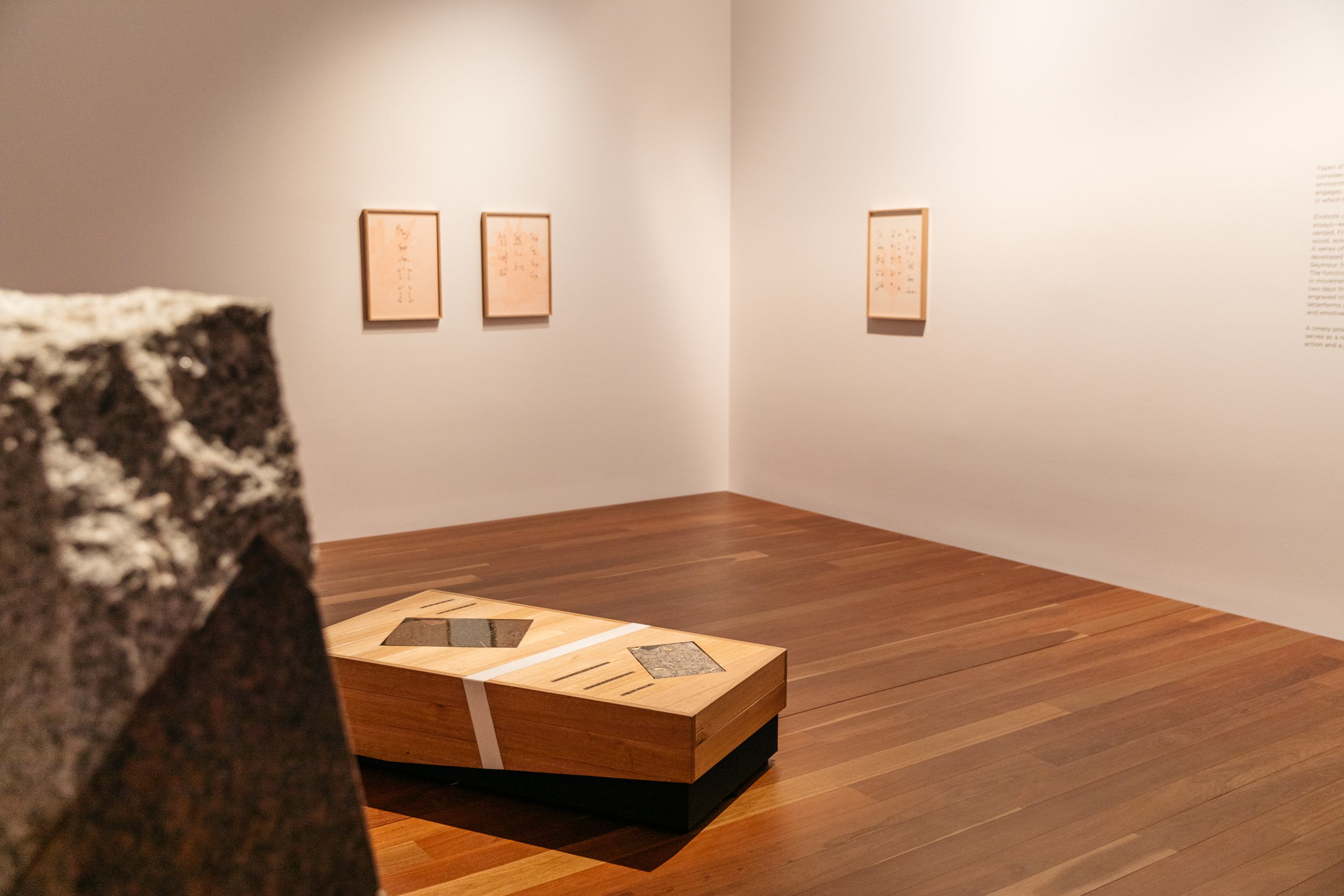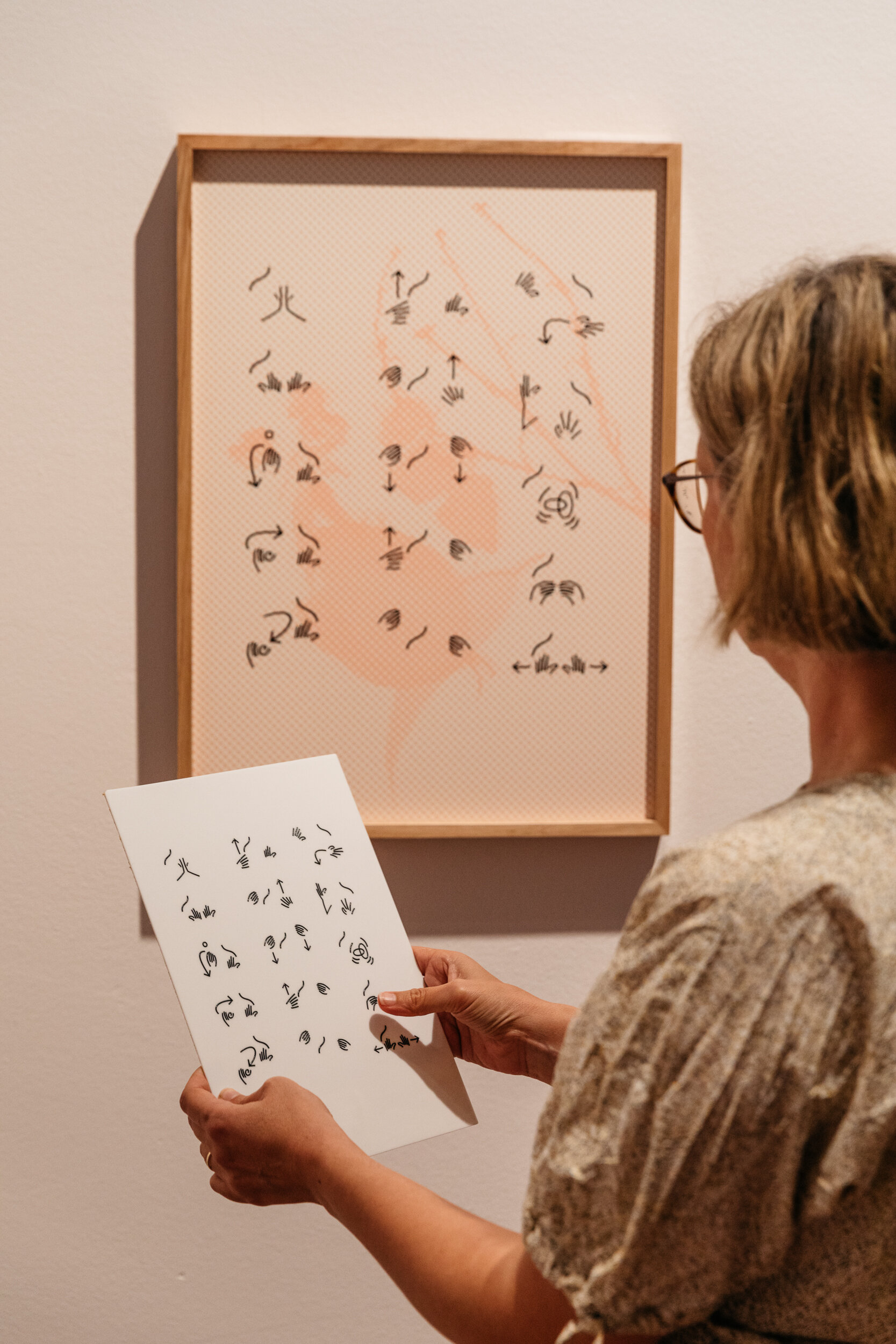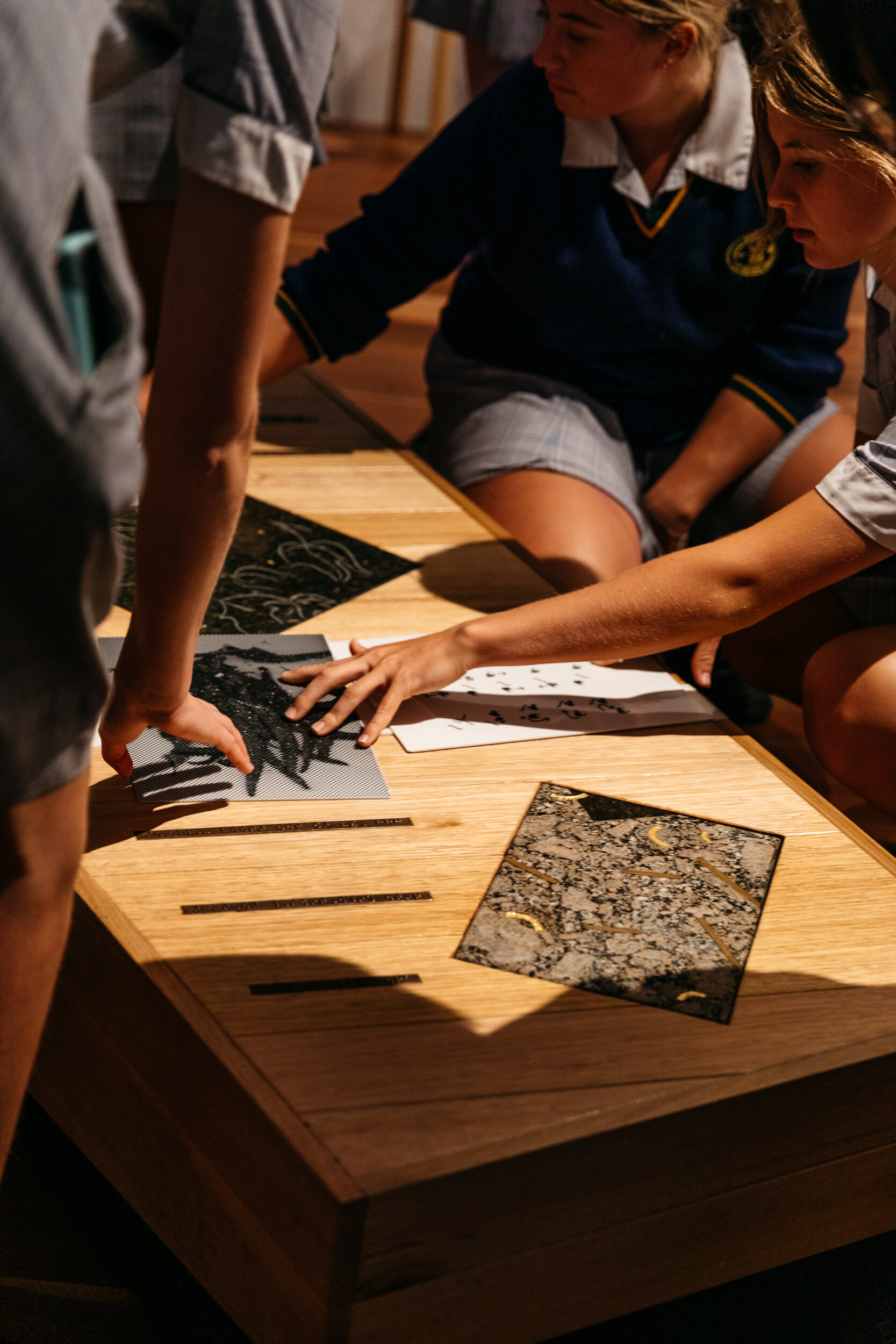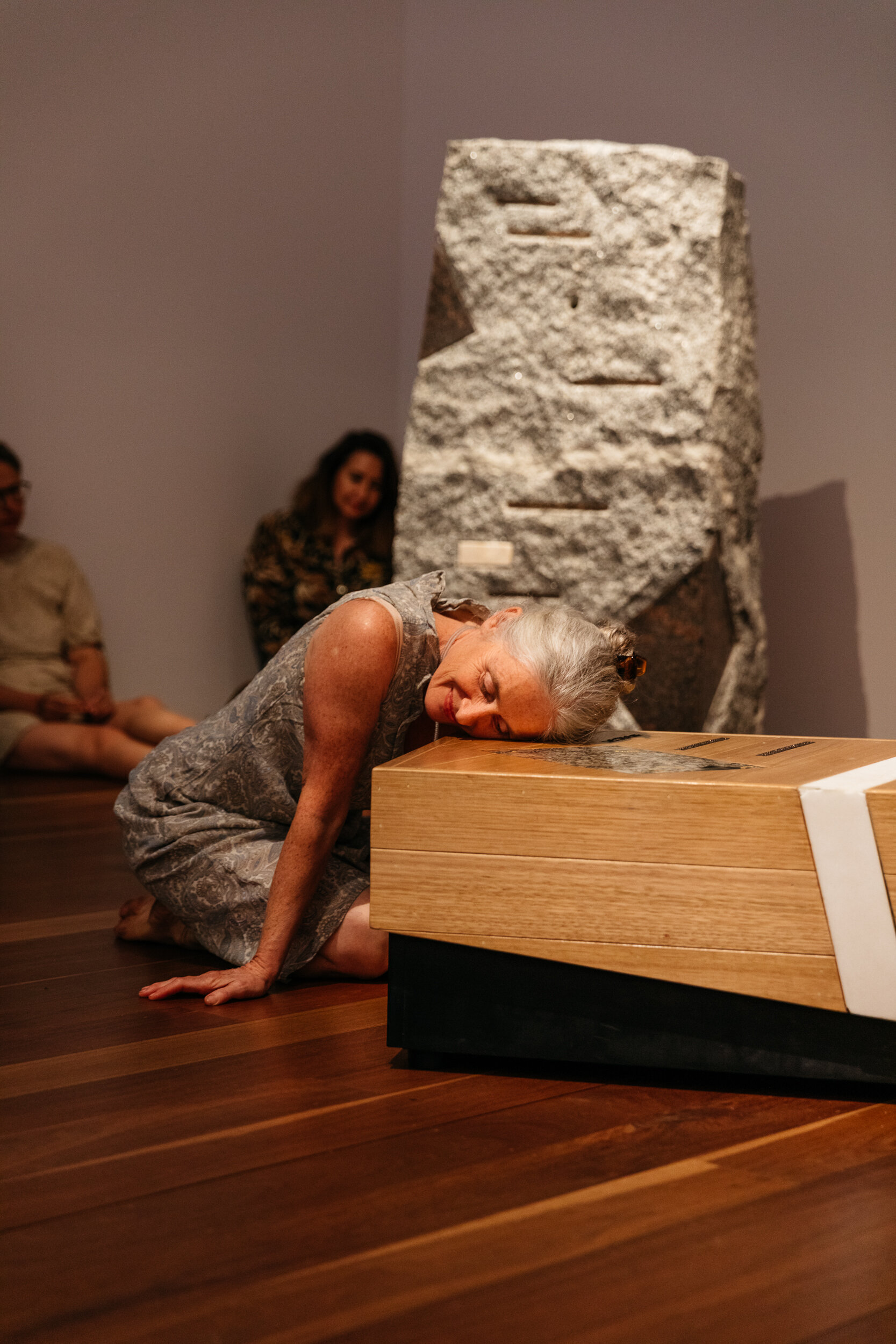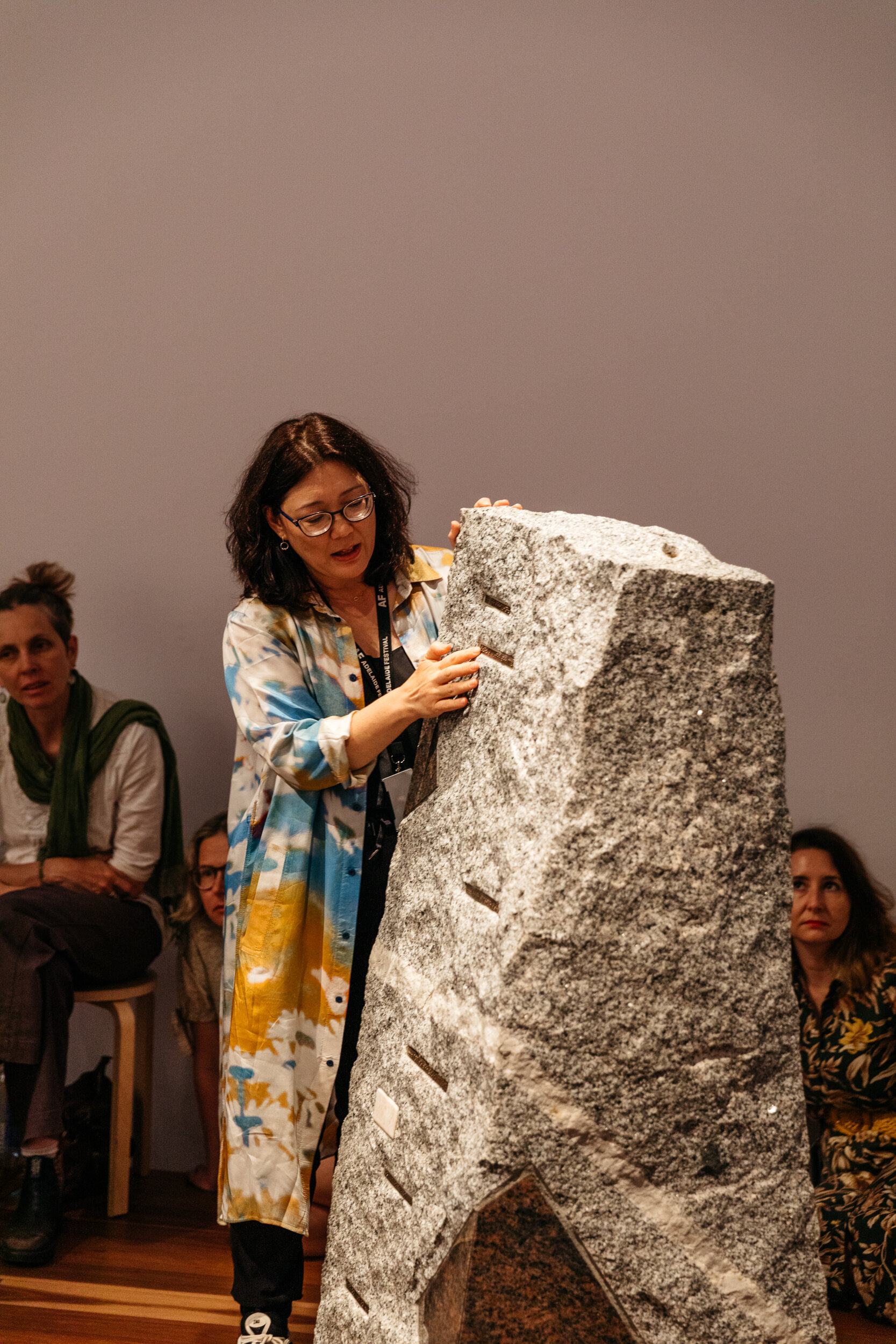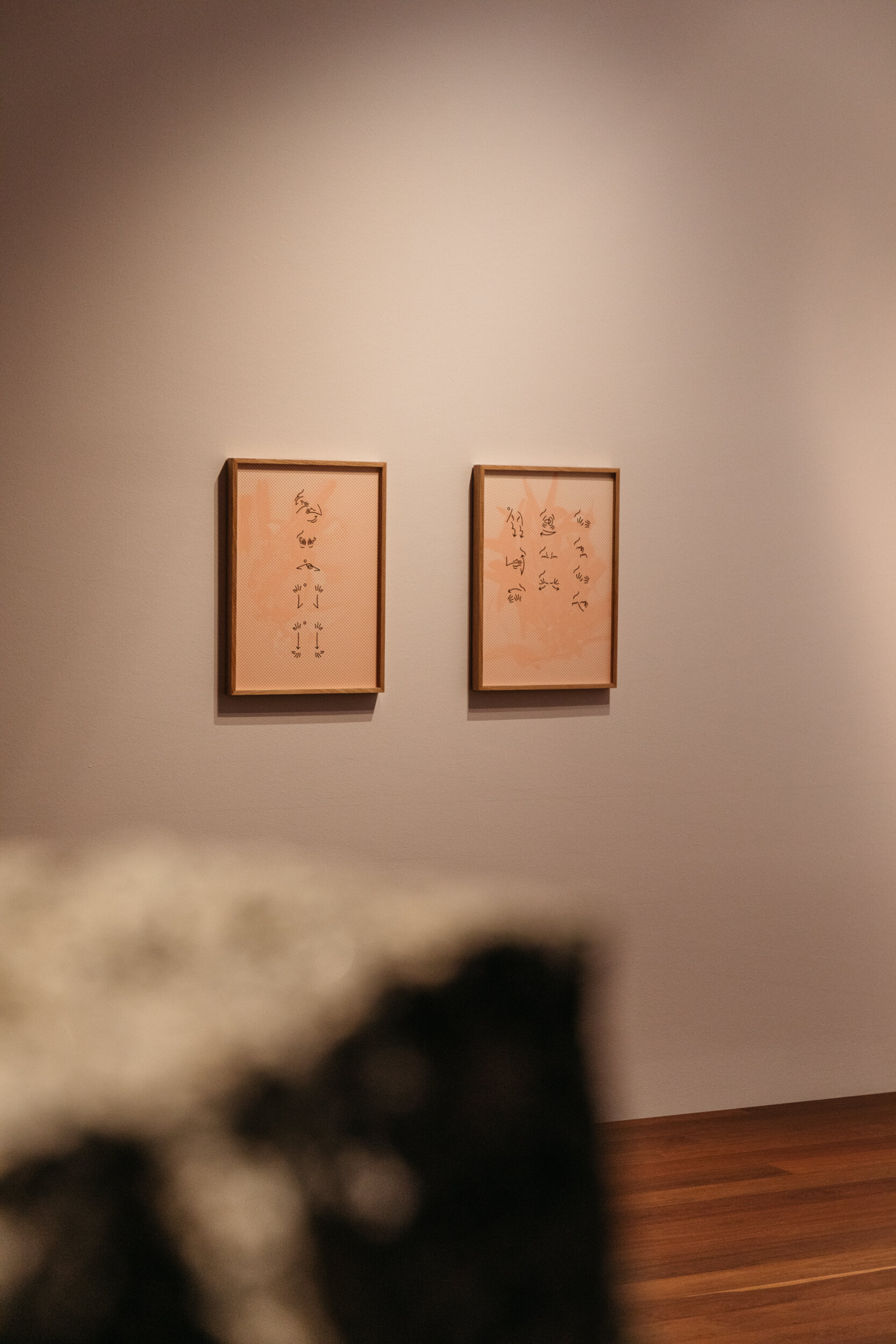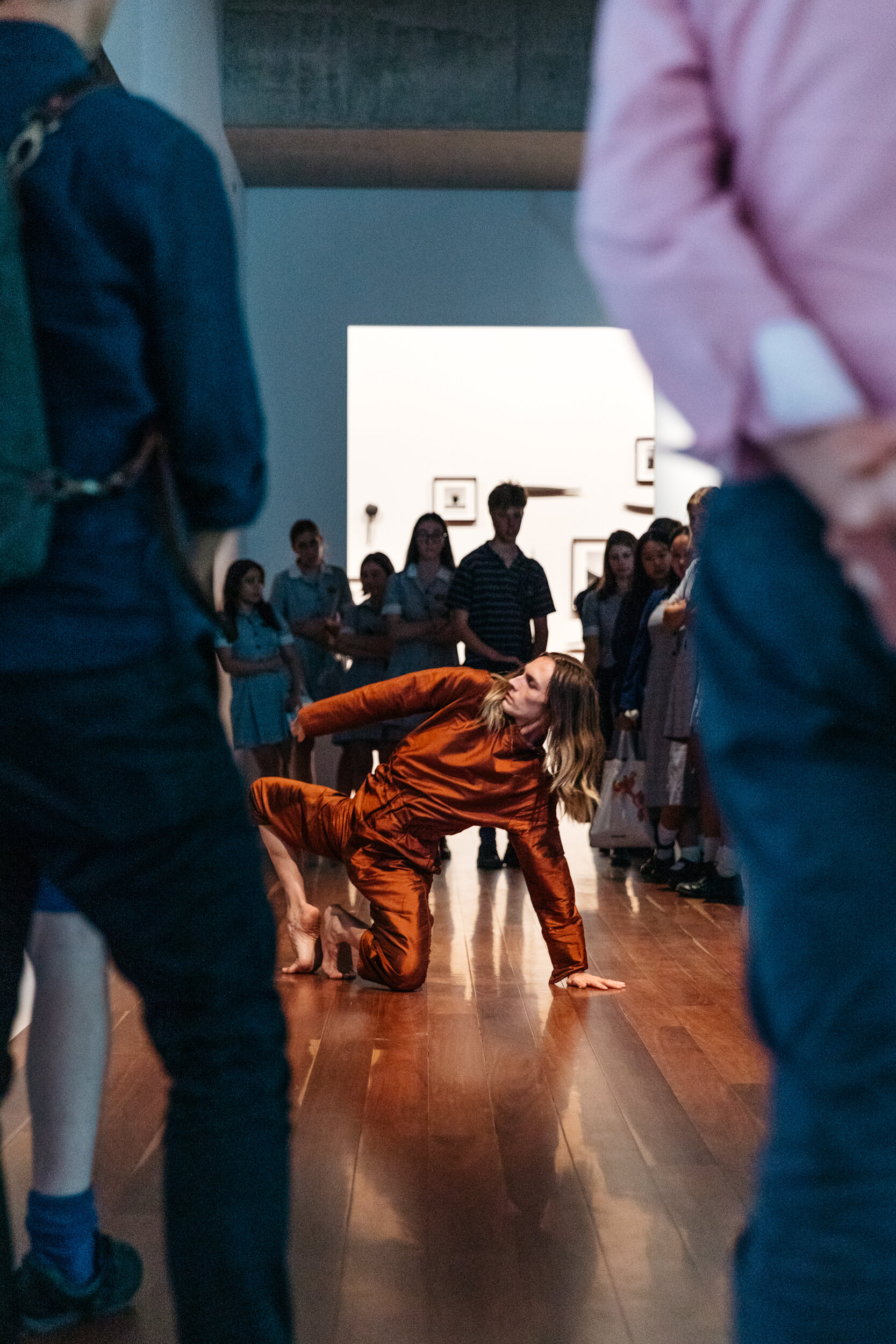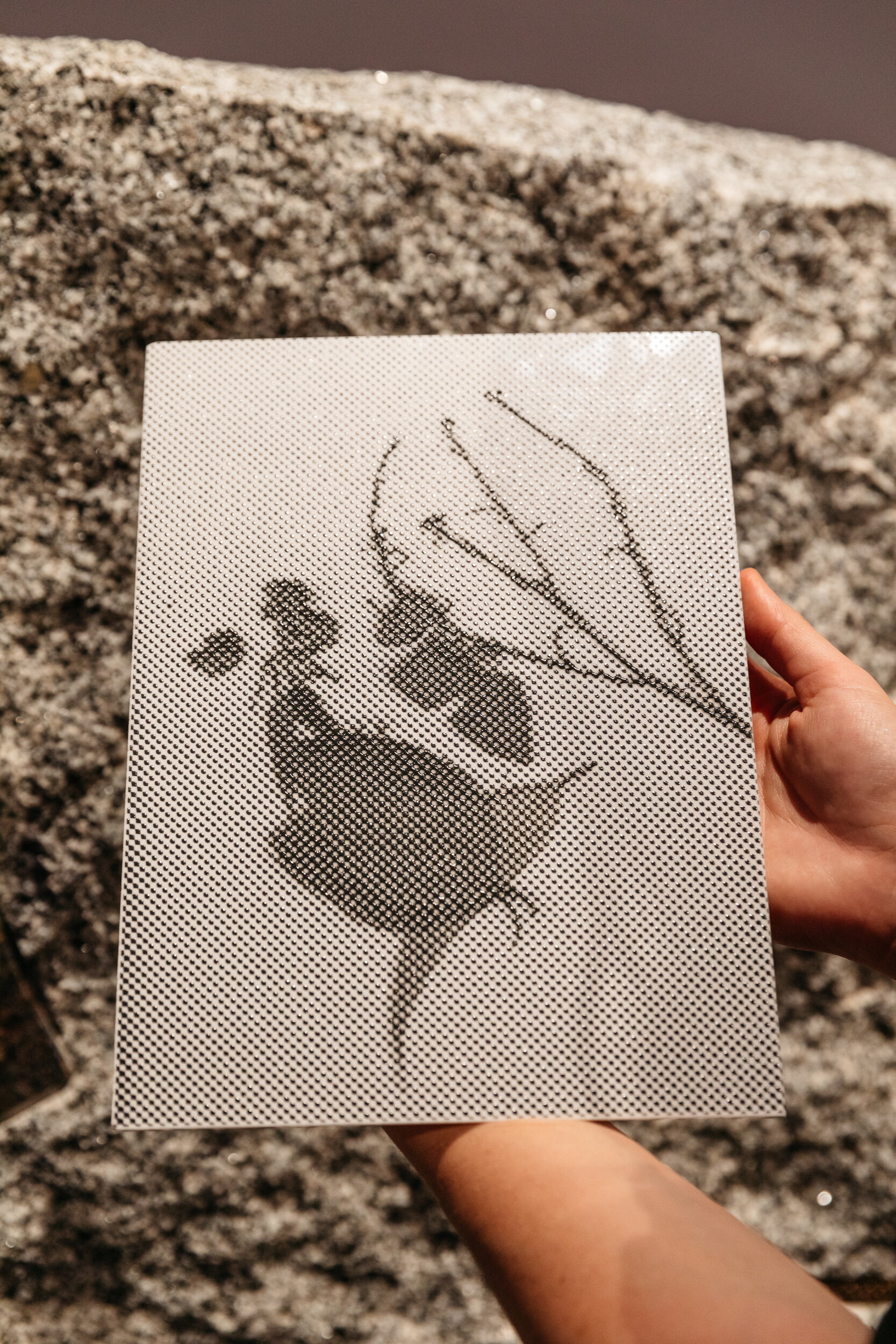Endnote: The Ethical Handling of Empty Spaces (2021)
Fayen d’Evie with Anna Seymour, Vincent Chan, Trent Walter, Benjamin Hancock, Sofia Lo Bianco, Bryan Phillips
Adelaide//International, SAMSTAG Museum of Art, Adelaide
-
(Adelaide//International catalogue essay)
Experimental Blundering and Embodiment: Fayen d’Evie’s Intersensory Conversations
A dancer moves around the gallery, embodying typographical form to translate the phrase, ‘We called to you with vibrational poetics, and so the story carries on, and on, and on…’ Cleaving letters from two into three dimensions, the dancer weaves around and through this virtual typography, articulating specific textual and foliate forms – historiated capitals, the internal volume of letterforms, the shape and tempo of apostrophes and ellipses, the curls of serifs and ligatures, and ornamental foliage. The sound of brushing taffeta amplifies bodily movement as the dancer, Benjamin Hancock, proceeds from micro-movements to gestural sweeping arabesques, physically imprinting a performative poetics originally conceived in response to resonant brass bells and gongs formed by blind sculptor Aaron McPeake. The choreographic loop—{~} ... , ... ; ... (2nd edition) 2021—is repeated over a two-day durational performance, with subtle variation. It recalls the reiterated interlacing of image and text and the conjunction of animal and vegetal forms, characteristic of the hybrid visual and literary form of the arabesque.
Choreographed by artist Fayen d’Evie and Hancock, these hybrid multiple formations of image, text, sound and movement are aligned with d’Evie’s interest in the idea of embodied knowledge, carried and transmitted through multiple sensory and communicative modalities over time. The body as sign and semaphore is also apparent in Essays in Gestural Poetics {;;} 2021, a new series of screenprints produced by d’Evie in collaboration with Trent Walter at Negative Press. Another newly devised form of typography is apparent in these drawings, which ingeniously register bodily movement as graphic score, creating a new lexicon or language read through gestural glyphs. Inspired by ancient rock carvings, the Lascaux cave paintings and contemporary sign languages, these glyphs—at once pictorial, literary, spatial and embodied—are a propositional response to the question of how movement and cultural behaviours might be archived and conveyed to future post-human readers. The image-texts are surprisingly intuitive and legible, even at first encounter, and are able to be put to the service of new texts and choreographies. They sit upon a pictorial ground abstracted from nature—leaf matter, plants, soil and rock from Dja Dja Wurrung Country where the artist lives— recalling plant as much as human histories, and reminding us of our interconnectedness with Country and our reliance upon nature. These background images are composed of bitmapped Ben Day dots which snap into resolution at specific distances, speaking to the specifics of context and contingency, and the situation of our bodies in relation to perception.
Elsewhere in the gallery, d’Evie presents a suite of accompanying sculptural objects – including a standing rock and a lying sarcophagus. They are fabricated from natural resources – from human skill and labour, and from ‘other-than-human’ materials such as granite, bluestone and mudstone, hardwood, marble and bronze, ochre, charcoal and gold leaf.1 Sound emanates from the sarcophagus—the squeaking of a wheelchair, the tapping of a cane—as the materials are subject to audio description and technical experiments conceived with sound artist Bryan Phillips and dancer Anna Seymour, whose first language is Auslan.
It is in the conjunction of these various sensory, performative, linguistic and sculptural forms that we come to understand d’Evie’s works as texts and iterative tests which work together to resonate on multiple levels. Collected together as sensorial essays, d’Evie’s polyphonic experimental forms encompass ‘tactile’, ‘gestural’ and ‘vibrational’ poetics. Graphic elements and speculative typography function as expanded concrete poetry, as conjunctions of visual and literary material given a tactile third dimension in order to shimmer and dance across architecture and page. Sculptural and performative elements resonate through vibration and sound—as well as more tactile poetics related to touch, feeling and sensation—as much as they do through visual and literary means. As the artist notes: “The marks, rivulets, topographies are like a kind of typography or score, or a form of braille, with punctuation marks, nuances and crescendos…” Informed by the experience of vision impairment—or blindishness, as the artist suggests—d’Evie embraces blindness as a critical position against ocular centrism and normativity in favour of ‘intersensory conversations’ exploring ‘the tangible and intangible, hallucination, uncertainty, the precarious, the invisible, and the concealed’. As the artist notes: “Blindness is not treated as darkness or nocturnalism here, but instead introduces a complexity and diversity of embodiments and relationships to perception, imagination, and consciousness, that offer an array of alternatives to the ocular standard of 20:20 vision. Blindness may destabilise performer-spectator conventions, activate attentiveness and movement improvisations, and innovate methods for sensing, archiving and conserving performative artworks.
With linguistic playfulness and poetic intuition, d’Evie has referred to ‘blundering’ as a favoured research and performative methodology – to stumble blindly, deliberately blundering, handling obstacles, grasping contours, reading myopically, listening for resonances. This stumbling relates to the artist’s concept of ‘sensorial wayfinding’, countering understandings of blindness as ignorant or lacking knowledge, as oblivion or deficit, in preference for more complex realms of experience, feeling, sensation and affect. D’Evie’s sensorial wayfinding also relates to conceptual and etymological concepts of ‘beholding’ (to guard, preserve, maintain, take care) as much as it does to the question of doubt and critical thinking (and the example of Saint Thomas the Apostle—the Doubting Thomas—who couldn’t believe his eyes, plunging his fingers into the body of Christ, touching wounds for evidence and proof). Through texts co-authored with conservator Sofia Lo Bianco, d’Evie reflects on the shifting materiality and semantics of her works as they resonate within and outside the museum over time.
Fayen d’Evie’s projects inevitably resist—or at least decentre—spectatorship in favour of multisensory modes which register at once through sight, hearing, touch, text, choreography and embodiment. As a polymath artist, publisher and teacher/academic—activities which she conducts alongside and integral to her role as a disability advocate and curator—d’Evie is interested in complementary ways of sensing, feeling and understanding the world. Her work is inherently collaborative, resisting the singular originating authorial voice in favour of experimental forms and dialogic structures which encourage reciprocal encounters between bodies—human and material—whilst blurring the relations and power dynamics between artist, audience and performer. With an earlier education and practice in physics, climate change and international peacebuilding, d’Evie’s art practice is alert to the movement of matter through time and space, to ecosystems and the dynamics of energy and environmental sustainability, and to questions of justice, ethics and development in social and non-human relations.
Inevitably, the encounter with Fayen d’Evie’s work becomes an exercise in learning and unlearning, an education—for this writer at least—in multisensory communication, knowledge and perception. It is equally a practice of exchange and reciprocity, iteration and difference. In conceiving of her work, d’Evie is unconstrained by the ‘narrow idea of a normative perceiving body’. As the artist contends: ‘I intend a blatant political position – an insistence that more can be done to offer diverse perceptual entry points into our creative conversations’.
-
Essays in gestural poetics {;;} (2021)
- Endnote: The ethical handling of empty space.
- We get in touch with things at the point they break down.
- Care is a cognate to grief.
Fayen d'Evie, Anna Seymour, Vincent Chan, and Trent Walter
Screenprints and tactual uv prints{~} ... , ... ; ... (2nd edition) (2021)
Fayen d’Evie and Benjamin Hancock
Durational performanceCare is a Cognate to Grief // The Skin of Language (2021)
Fayen d’Evie and Sofia Lo Bianco
Audio and AUSLAN reading performanceEssays in vibrational poetics {.} Acknowledging Margaret Woodward, Núria López, Mrs Eaves, and women who painted the caves in tactile poetics (2019)
Fayen d’Evie
Granite, quartz, marble, bronze, ochre, charcoalEssays in vibrational poetics {"} Acknowledging a debt to the syntax of the cotton plant (2019)
Fayen d’Evie and Bryan Phillips
Hardwood, marble, granite, bronze, ochre, charcoal, transducer, resonators, amplifiers———
A related video work, edited from documentation of the durational performance, 19-20 March 2021, at SAMSTAG Museum of Art, Adelaide, is available by request for exhibition.
{~} ... , ... ; ... (2nd edition) // typographic notes (2021)
Fayen d’Evie and Benjamin Hancock
Video (18.13 mins)
Videography by Thomas Smeets
Editing by Benjamin Hancock
Colour grading by Jacob Edmonds -
Adelaide//International
SAMSTAG Museum of Art, Adelaide
26 Feb - 1 Apr 2021Curated by Gillian Brown
Download the 2021 Adelaide//International catalogue in PDF format
